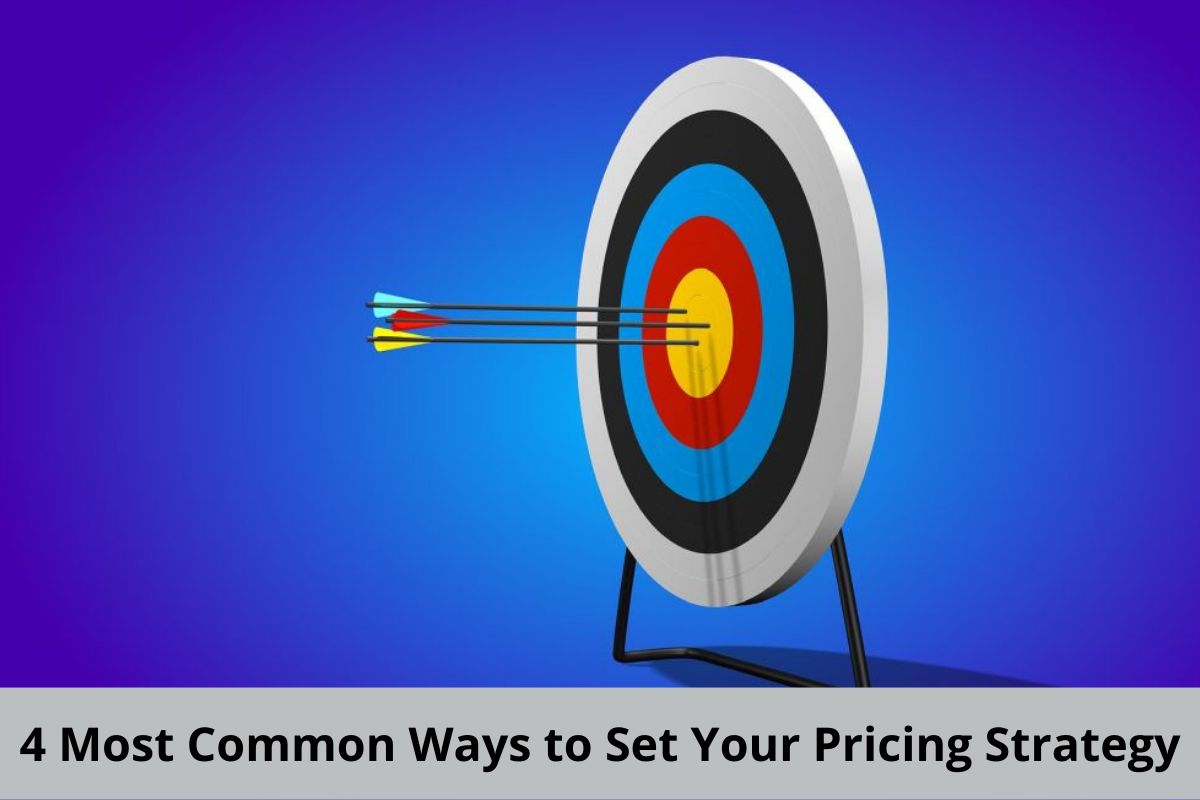Market with business cards (12 clever ways)
One of the most cost-effective ways to market your product or service is … A time-tested, simple business card And […]
Read More »Become a successful marketing consultant: Learn more

One of the most important decisions your business can make is setting your prices.
If the prices are too low, sales might rise but your profits and income will likely suffer.
What are the goals of your pricing strategy? Here's the four most common ways to set your pricing strategy goals:
1. To achieve a target return on investment
2. To stabilize your price and margin
3. To gain a target market share
4. To meet or prevent competition
Alternatively, if the client thinks your prices are too high, they may go to a competitor. Or even find a substitute product or service -- skipping your product or service category altogether.
Either way, your sales, profits and income suffer.
Locating the right pricing structure is a crucial step in the overall strategy.
When deciding upon what price to charge your customers, most providers pick a number based on what they think they are worth, whether that is $15 an hour or $1,000.
They are focused on just one factor -- their own goals.
If the market was only concerned with your personal goals, setting prices would be easy -- Just set your income needs and get to work!
But your goal is only part of the pricing equation.
The other critical factor is identifying what is most important to the customer.
And this complicates your pricing strategy.
This is why the price you charge your customer come from two main objectives:
1. Your marketing parameters -- what the market is willing to pay, and
2. Your goals.
Armed with these big picture objectives, there are four common best pricing practices that great business people consider when developing their pricing strategy into their overall marketing mix.
Another way to say this: How much money do you want to make? If your goal is to earn $2,000 in income from serving clients then you have a starting point and can begin to set benchmarks to build your pricing strategy.
You want to strive for a balance where your prices are demanded by the market and you have adequate profit margin to maintain your business. This means, your costs are kept low enough to be able to have a large enough profit margin that enables you to pay for ongoing costs such as website costs, advertising, auto and gasoline, materials, communications, office supplies, etc.
Remember not all sales revenue is earned income. A percentage needs to go towards keeping your business strong, healthy and future focused while meeting today's needs.
If there are 30,000 potential customers in your target market as defined by your demographic research, and your initial marketing plan targets 10% of this market (30,000 X 0.10 = 3,000), then you want as much of the 3,000 in your market share as you can gain. Your marketing plan will be designed around regularly communicating value to this target market so you can reach your goal.
For more on this, see our Guide to Market Research, and the free Sales and Marketing Forecast Model (Google Spreadsheets).
As mentioned earlier, if your prices are very low, you can gain an increase in market share by taking business away from your competitors. But you run the risk of running yourself out of business due to a slim-to-none profit margin.
If your goal is to meet or prevent competition then your pricing strategy should be in line with what your competitors are charging for a comparable service.
To prevent competition, this will require you to deliver more value and aggressively communicate regularly with your target market using our Email Marketing strategy and Direct Mail Marketing, and an optimal price point.
For some great pricing strategies, be sure to check out our tutorial:
3 sneaky ‘psychological pricing tricks’ used by businesses to increase sales.
When setting prices, two of the most important factors to consider are cost and market demand.
Cost refers to the total amount of money that goes into producing, packaging and selling a product or service. This includes the cost of raw materials, labor, overhead, marketing and sales, and other related expenses.
Market demand refers to the level of consumer demand for a particular product or service. It is important to determine the market demand for a product or service in order to set a price that will generate a reasonable profit margin.
It is also important to consider how a product or service fits into the competitive landscape. Understanding the competitive landscape will help to inform pricing decisions, as well as help to identify potential opportunities for market expansion. Finally, pricing should take into account the impact of promotional and marketing activities, as well as any other external factors that could affect pricing, such as changes in regulations or taxation.
Overall, cost and market demand are the two most important factors when setting prices.
By understanding the cost of production, the level of consumer demand, the competitive landscape, and the impact of external factors, businesses can make informed decisions about pricing strategies that will enable them to maximize profits.
About Your Strategic Marketing Partner
Sam Hirschberg, MBA, is Your Strategic Marketing Partner in Arizona. Always professional and a delight to work with, Sam is not your typical “marketing consultant”. Unlike most consultants who tell you there is a problem and say, “See you later and good luck!” Your Strategic Marketing Partner knows how to find solutions, execute programs, test and measure campaigns, and how-and-when it’s time to roll-out big! You are invited to call (602) 892-0777 to learn more about Sam’s background on his FREE 9-minute recorded message. For more information about Sam, please visit https://strategicmarketingpartner.com.